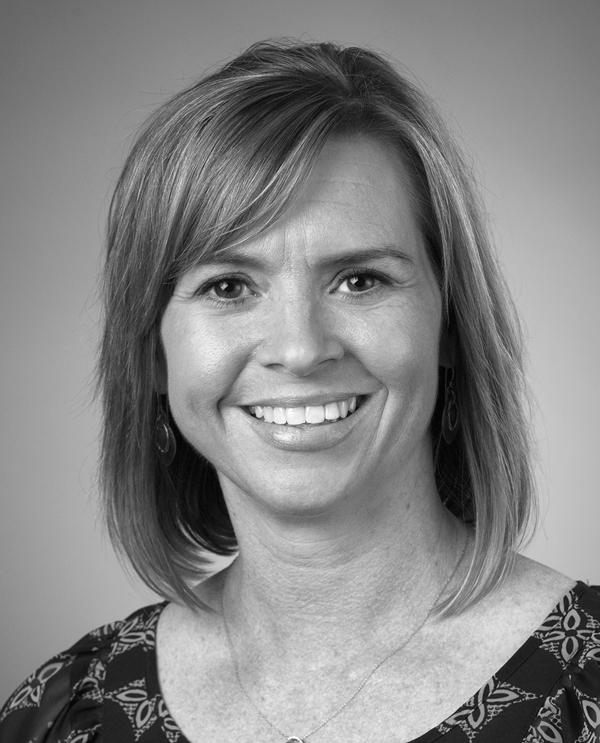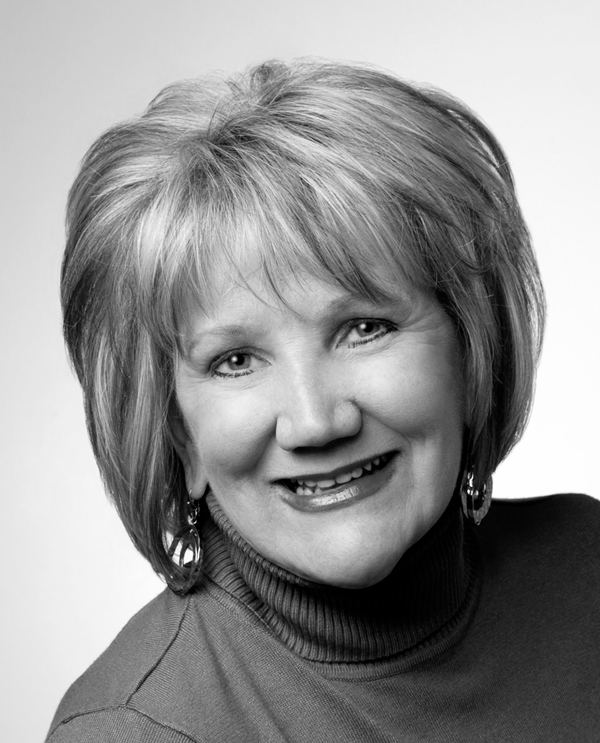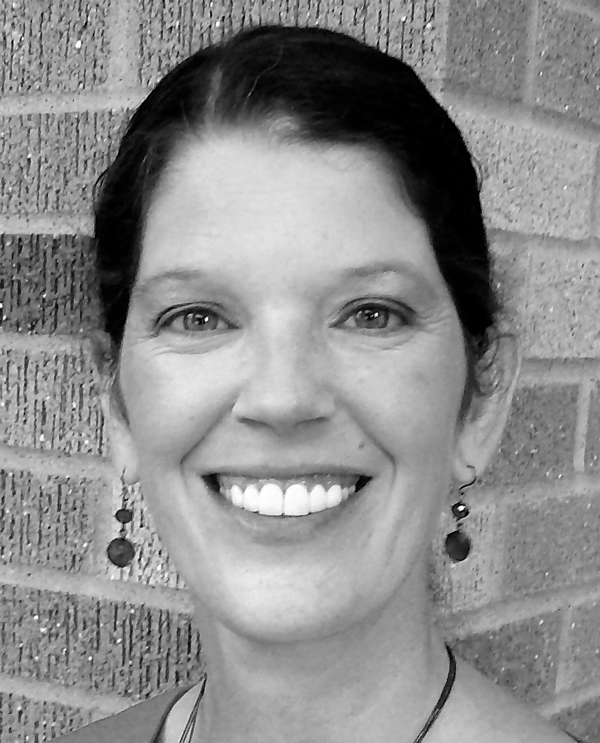Sight
Unseen


Sight
Unseen

t’s been 15 days since Colleen Rud heard from an underage human trafficking victim she knows in the Abilene area. The girl is moved around often. As a case management advocate for the Regional Victim Crisis Center in Abilene, Rud tries to contact victims once a week, but they don’t always respond. She constantly checks her phone waiting for a call or text, hoping in the meantime that they’re safe.
Clarity Unclear
The human trafficking advocacy movement gained traction two years ago when state legislators declared human trafficking a public health issue, and HB 2059 became law. (See The Bill Breakdown.) The legislation mandates training for anyone with direct patient contact — including those who work the front desk.
To provide resources and support to the community, university leadership turned to Julie St. John — and colleagues Heather Guest, Pearl Merritt, Colleen Rud and Kelli White — to build a compliance strategy, implement the new law into university protocol and provide community outreach and education.
In the process, St. John discovered many different departments, community organizations and clinics working independently to combat human trafficking. The TTUHSC Human Trafficking Collaborative (HTC) was established to pull these groups into one central hub of synergized effort — a unique approach that engages community partners.
While the effort began in Abilene, it has expanded to include every TTUHSC campus.
HTC has approximately 40 members and also includes representation from Texas Tech University and community stakeholders such as Rud and White, a family nurse practitioner at Neurosurgery Associates of West Texas in Abilene.
HTC members are divided into four working groups — prevention, education, research and survivor services. Some of the members are also working on human trafficking task forces at the state level.
According to St. John, putting human trafficking through a public health lens decides:
- Who’s involved in the fight.
- How those people are involved.
- Ways to identify changes to reduce enabling factors.
Discovery Unidentified: What are the Signs?
Now, an assistant professor of nursing on TTUHSC’s Abilene campus, Guest serves on TTUHSC’s Human Trafficking Collaborative.
“When I reflected, I thought I probably came across cases of human trafficking, and I didn’t even know what signs to look for,” she said.
After she started teaching future nurses, more than two dozen scenarios were used in teaching, and one was a human trafficking scenario.
“It was a patient with a sexually transmitted infection, and the students needed to figure out what was going on,” Guest added.
Some students realized it was a human trafficking case, and that spurred Guest’s plans to bring human trafficking information to undergraduate nursing students. That, in addition to the state-mandated training, she hopes will make an impact.
A lot of victims will have contact with a health care professional and not be noticed, Guest said. Training will help providers recognize human trafficking victims as they come into the clinic or hospital.
- Cigarette burns.
- Bruises.
- Malnourishment.
- Chronic infections like urinary tract infections.
- Tattoos on the nape of the neck, lip or behind their ear.
- The way they dress — not wearing appropriate clothing for the weather or the venue.
- Avoiding eye contact.
- An adolescent who seems poor but has an expensive purse and manicure.
“I’ve always felt if I could have identified one person, I would have made a difference in that person’s life,” Guest added. “So that’s what I take with me now as a teacher. You may not make a difference on a large scale, but you may make a large-scale difference for one person — and that’s worth it.”
Nurse Practitioner | Neurosurgery Associates of West Texas

The average age of people brought into sex trafficking is between 12 and 14 years old, according to the U.S. Department of Health and Human Services. Although most victims are female, now younger boys are also being trafficked — regardless, all victims are groomed and controlled.
Trafficking usually begins as a relationship between the victim and the person who’s earned their trust. The trafficker learns the victim’s vulnerabilities and capitalizes on them through trafficking. The victim’s family may be poor and nee help paying bills, for example, or the victim may want a new car or new clothes. Many of the victims have high-risk factors like sexual assault or family violence. They may also have prior experience with the Texas Department of Family and Protective Services, Rud added.
Sometimes it’s parents themselves who traffic their children, St. John said. Americans hear about this happening in other countries, but it also happens here. Parents who need money or a drug fix look the other way when someone takes their daughter for a few days to be used for sex in exchange.
But some victims come from a stable family and are just curious.
Human Trafficking Collaborative Executive Leadership

Heather Guest, MSN, RN, CNE, CHSE
Her vision: “It’s up to us to be educated, so we can help provide patients the resources they need, or mandatory reporting for persons who are younger

Pearl Merritt, EdD
Her vision: “By facilitating the dissemination of knowledge, supporting education and promoting public awareness about the issue. TTUHSC can play a vital role in addressing the human trafficking crisis in

Her vision: “We can’t make everyone make the right choices all the time. But we can raise awareness and make it harder for traffickers with stricter punishments by actually prosecuting them for slave trafficking — because that’s what it is.”

Kelli White, MSN, FNP-BC
Her vision: “I want to see the number of human trafficking victims decrease. I want to see the number of arrests go up. I want to see victims have their records expunged. We need better resources for survivors.”
Discernment Unrecognizable
St. John said Houston, Dallas and El Paso are the hotspots in Texas, along with the Interstate 10 and 20 corridors, convenient routes for traffickers to move victims throughout the state, making Abilene a popular location as well.
There are many reasons it’s hard for a victim to step away from a trafficking situation:
- It’s a better situation than their home, where there was abuse, or they’re now eating regularly and have a place to sleep.
- They may not realize they’re being trafficked. Trafficking is like domestic violence, and it takes an average of seven times before the person being trafficked has a light bulb moment.
- Crippling drug addiction.
- Threats. One girl wouldn’t leave a situation because the trafficker said he’d kill her family. Her mom contacted White, who told the mom it’s a lot easier for the trafficker to move on and find another victim, but the threat was very real to the girl. Eventually, White helped the mom rescue her daughter
- Laws still penalize the victims for drug offenses, prostitution and other crimes, which adds to their trauma and makes them hesitant to talk to law enforcement to help prosecute the trafficker, said Rud. Often traffickers even let victims go to jail so they can recruit more victims.
Convincing elected officials to even agree sex trafficking happens within the areas they represent has been a challenge, said Rud. People don’t want to think sex trafficking happens in their communities.
Members of the HTC say there’s a gap between what elected officials believe and what the people working daily with human trafficking victims know. That gap is closing with legislation like HB2059 and HB390. Signed by Gov. Greg Abbott in May, HB390 mandates that hotels and motels train their staff on human trafficking and employees who report it cannot be terminated.
And in this year’s legislative session, four bills were proposed to toughen laws, improve investigative and prosecution tools and protect victims. HB1540/SB1036 was the only one that made it to the governor’s desk.
The Bill Breakdown
House Bill 2059 – Passed June 10, 2019
- Any individual who holds a license, certificate, permit or other authorization issued under the title “health care practitioner,” who engages in a health care profession and provides direct patient care, must complete a training course on human trafficking prevention for license renewal and as continuing education requirements.
House Bill 390 — Passed May 18, 2021
- The operator of a commercial lodging establishment shall require each employee who the establishment directly employs to complete an annual human trafficking awareness and prevention training program.
- The operator may not discipline, retaliate against or otherwise discriminate against an employee for making a good faith report of a suspected act of human trafficking.
House Bill 1540/Senate Bill 1036 — Sent to the governor June 6, 2021
- Extend the definition of “coercion” to apply to adult labor trafficking and child labor trafficking.
- Remove intercounty requirement for civil cause of action.
- To prove a civil cause of action for human trafficking. The previous statute required the offense or an element of the offense to have occurred or been facilitated in more than one county.
- Prevent reckless toleration of trafficking.
- An enterprise could not be held liable unless the finder of fact found that a director of high managerial agent performed, authorized, requested, commanded, participated in, ratified or recklessly tolerated the unlawful conduct of the agent under the previous statute. Under the new bill, agents and individuals who enter into a work contract for the enterprise are now liable.
- Increase residential treatment and emergency center protections.
- All providers and owners of residential treatment centers and emergency facilities must post “no trespassing” notices along the exterior boundaries of the property and designate the centers as child safety zones and gang- and drug-free zones.
Case Management Advocate | Regional Victim Crisis Center
Case Management Advocate | Regional Victim Crisis Center
Case Management Advocate | Regional Victim Crisis Center
Finale Unfinished
If they need someone to listen, answer questions or be an advocate at a hospital, she’s there.
“It’s a stressful job,” she added. “I do arts and crafts to relax, but sometimes I don’t have the energy to do that. I just had a tough week, and it was all I could do to get my nails done and just sit there,” she said.
But every now and then, there’s a happy ending.
The underage girl being trafficked around the Abilene area was rescued. Rud can’t share details because it would put the investigation at risk. As draining as Rud’s job can be, when someone is rescued from human trafficking, she’s rewarded.
Then her phone rings.